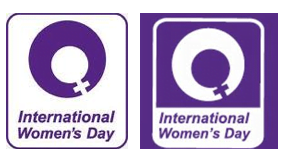A proposal by the Republican leadership in Congress to cut all funding for Planned Parenthood has caused a huge uproar here in the United States. Several political opponents of the measure have lined up against it and there has been a significant groundswell of opposition at the grassroots.
Planned Parenthood is a mainstay of reproductive health for middle class and working class women in the United States. According to some studies, one in four American women voters have visited a Planned Parenthood clinic at some point in their lives. That makes for a potentially very powerful political constituency and in all likelihood, the measure will be defeated.
But what American women may be feeling right now is par for course for women in the developing world. Access to basic reproductive health services remains one of the key challenges facing women of the developing world. Of the eight Millennium Development Goals, the goals dealing with maternal health are farthest from its target; a two thirds reduction in maternal mortality ratios and universal access to reproductive health care are not on track to be met by 2015.
The slow progress toward these goals is owed, in part, is that international family planning funds are treated as a political football here in the United States. There are a panoply of Congress imposed restrictions on American funding for international family planing, contraception and reproductive health.
Perhaps the best known is the so called “Global Gag Rule” which prohibits any recipient of US development or health dollars from providing abortion services–or even mentioning “abortion” (hence the “gag” rule). Since 1985, this measure has been routinely imposed by Republican presidential administrations on their first days in office, and routinely lifted by Democratic presidents in their first days in office.
Then there is the Helms Amendment, first enacted in 1973 which states, “No foreign assistance funds may be used to pay for the performance of abortion as a method of family planning or to motivate or coerce any person to practice abortions.” As if that were not clear enough, there are several other very similar bills passed by Congress over the years. USAID has an entire web page listing the various amendments and Congressional restrictions on how it undertakes international family planning programs.
Perhaps one of the most absurd Congressional restrictions on international family planning is the convoluted way that the United States pays into the United Nations Population Fund (UNFPA), which supports reproductive health services worldwide. Out of a mistaken belief that UNFPA supports China’s “One Child” policy, the United States automatically deducts from its payments to UNFPA an amount equivalent to what UNFPA pays to support programs in China. So, if UNFPA supports $10 million worth of programs in China, the United States automatically subtracts $10 million from its disbursement to UNFPA.
Crazy, isn’t it? It is also totally counterproductive. There is mounting evidence that empowering women and adolescent girls to make decisions about their own reproductive life is a key way to leverage other development gains. For every one dollar spent on international family planning, governments save up to $31 in health care, water, education, housing, and other costs. Preventing maternal mortality is not only the right thing to do, it makes economic sense as an international development priority for the United States.
A sharp editorial in the New York Times called congress’ assault on Planned Parenthood part of a “war on women.” On International Women’s Day, it is worth keeping in mind that there are global dimensions to this struggle as well.
